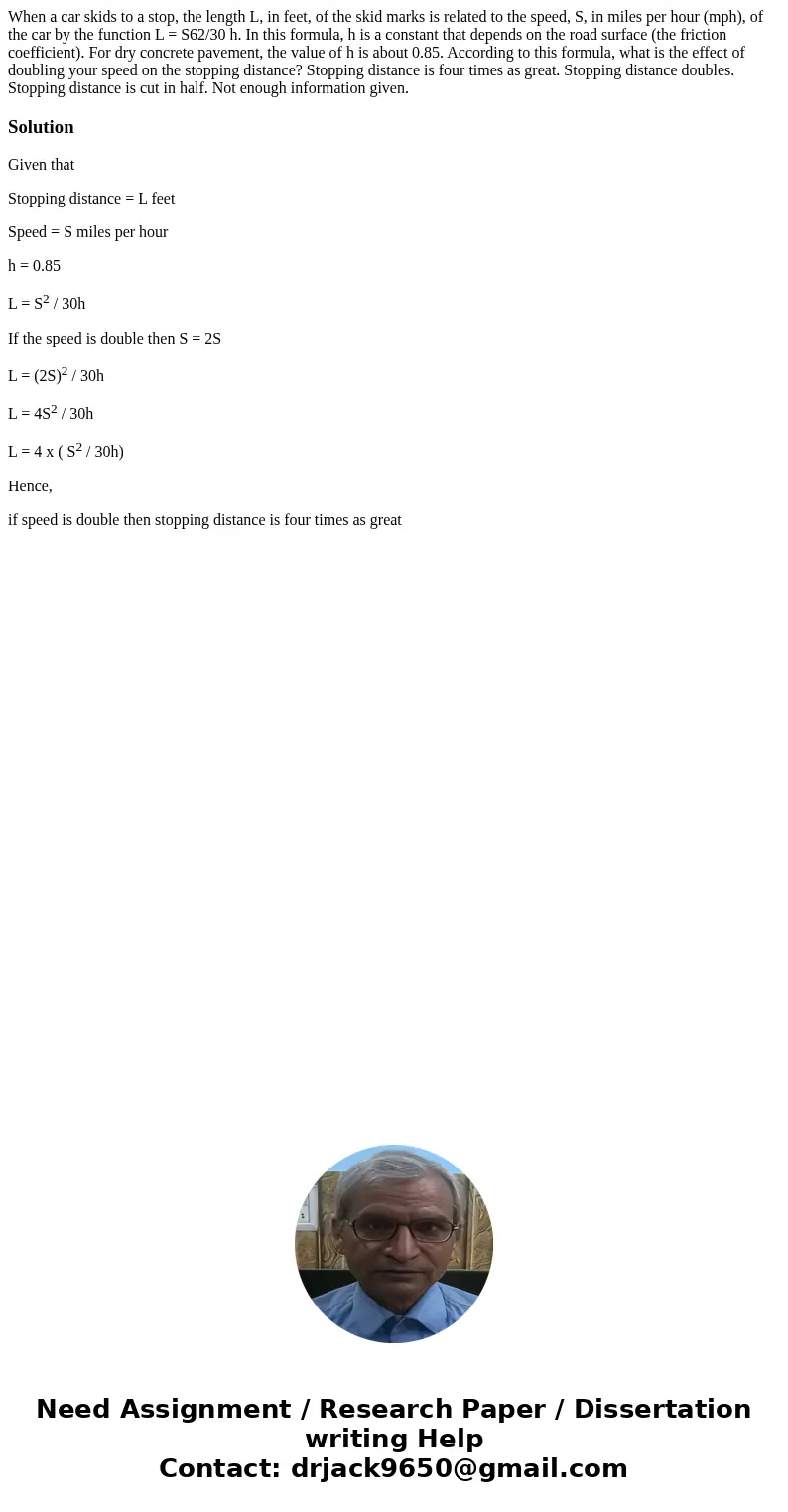When a car skids to a stop the length L in feet of the skid
When a car skids to a stop, the length L, in feet, of the skid marks is related to the speed, S, in miles per hour (mph), of the car by the function L = S62/30 h. In this formula, h is a constant that depends on the road surface (the friction coefficient). For dry concrete pavement, the value of h is about 0.85. According to this formula, what is the effect of doubling your speed on the stopping distance? Stopping distance is four times as great. Stopping distance doubles. Stopping distance is cut in half. Not enough information given.
Solution
Given that
Stopping distance = L feet
Speed = S miles per hour
h = 0.85
L = S2 / 30h
If the speed is double then S = 2S
L = (2S)2 / 30h
L = 4S2 / 30h
L = 4 x ( S2 / 30h)
Hence,
if speed is double then stopping distance is four times as great

 Homework Sourse
Homework Sourse